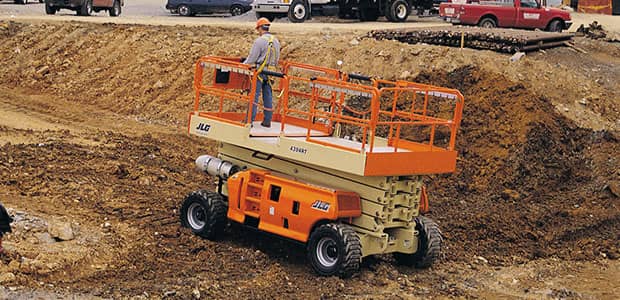Crucial Factors to Consider for Elevator Maintenance
When it comes to the safe and efficient operation of lifts, thinking about important upkeep variables is extremely important. It is vital for developing supervisors and maintenance employees to stay in advance of these elements to promote the elevator's efficiency requirements and conformity requirements.
Normal Inspection Schedules

Carrying out regular inspections not just improves the overall efficiency of the elevator but additionally plays a vital function in adhering to safety and security guidelines and industry criteria. It makes sure that the elevator runs efficiently, lessening the risk of unanticipated malfunctions that might inconvenience occupants or concession safety. In addition, routine examinations contribute to lengthening the life expectancy of the lift devices, inevitably minimizing maintenance expenses and downtime.
To streamline the examination process, several building proprietors partner with certified elevator maintenance business that focus on performing extensive assessments and offering punctual maintenance solutions. By prioritizing routine evaluation schedules, stakeholders can promote the security, reliability, and performance of their elevator systems.
Correct Lubrication Techniques
Efficient lubrication practices are necessary for maintaining the ideal efficiency and longevity of lift components. Correct lubrication techniques play a critical function in preventing deterioration on relocating components, decreasing rubbing, and making certain smooth operation of the lift system. When it concerns elevator upkeep, utilizing the appropriate lubricating substances in the correct quantities at the recommended intervals is essential to decreasing and protecting against costly repairs downtime.
To ensure proper lubrication, lift technicians must follow manufacturer guidelines regarding the kind of lubricating substance to be made use of for details parts such as bearings, equipments, and overview rails - lift maintenance services. Over-lubrication can attract dirt and particles, causing element malfunctions, while under-lubrication can cause raised rubbing and premature wear. On a regular basis arranged lubrication maintenance need to be consisted of in the general elevator upkeep strategy to keep the system running efficiently and securely
Checking Tear and use
Elevator maintenance employees should carry out regular examinations to identify signs of wear on key components such as ropes, sheaves, overview rails, and bearings. Furthermore, keeping thorough upkeep documents can assist in tracking the wear patterns of lift components over time, allowing for predictive maintenance preparation. By closely keeping track of wear and tear, maintenance teams can deal with problems proactively before they escalate into costly repair work or unforeseen downtime, making sure the secure and effective operation of the elevator system.

Safety And Security Compliance Checks
Conducting detailed safety compliance checks is necessary in ensuring the elevator system satisfies all governing standards and operational demands. Safety and security conformity checks involve an extensive assessment of numerous parts such as emergency brakes, door sensors, interlocks, and electrical systems to ensure they are operating appropriately. Normal inspections by certified professionals help determine prospective safety and security hazards before they intensify right into significant problems, making sure the security of guests and conformity with industry regulations. These checks also entail validating that the lift's ability limitations, speed, and emergency communication systems are in line with safety and security criteria. In addition, adherence to security compliance checks can avoid accidents, reduce responsibility threats for building owners, and extend the life-span of the lift system. By prioritizing safety conformity checks as component of routine maintenance, structure supervisors can support a reliable and risk-free vertical transport system for passengers.
Emergency Situation Response Preparation
In light of the important significance of safety conformity sign in keeping lift systems, a durable emergency feedback planning technique is paramount to promptly and effectively address unexpected occurrences. lift engineer course. Emergency situation reaction preparation for lifts involves proactive procedures to make certain the safety of travelers and upkeep employees in the event of emergencies such as power interruptions, entrapments, or mechanical failings
Key components of an efficient emergency situation feedback strategy consist of establishing clear communication protocols, offering routine training to personnel on emergency situation treatments, keeping current emergency situation contact lists, and conducting routine drills to practice reaction actions. Additionally, it is important to have actually assigned workers in charge of working with emergency situation actions and making certain that essential tools, such as emergency situation lights and interaction gadgets, are in working order.
Conclusion
In conclusion, it is essential to prioritize regular examination timetables, correct lubrication methods, checking deterioration, security compliance checks, and emergency feedback preparation for elevator maintenance. By implementing these essential variables, structure owners can ensure the safety and performance of their elevators, ultimately lowering the threat of mishaps and malfunctions. Consistent upkeep methods are essential for lengthening the life expectancy of elevators and making certain the wellness of individuals that depend on them for transport.
Consistently arranged lubrication maintenance must be included in the total elevator upkeep plan to keep the system running successfully and safely.
Lift maintenance employees must conduct regular evaluations to recognize indications of wear on vital parts lift maintenance services such as ropes, sheaves, overview rails, and bearings. Additionally, maintaining detailed upkeep records can help in tracking the wear patterns of lift elements over time, enabling for anticipating maintenance preparation. By closely keeping an eye on wear and tear, upkeep teams can attend to issues proactively before they rise into expensive fixings or unexpected downtime, making sure the effective and secure operation of the elevator system.
